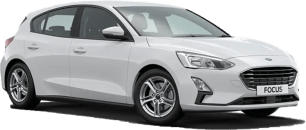It’s kind of amazing just how much Citroen has managed to fit into the Grand C4 Picasso. It measures 4602mm long - which is just 22mm (an inch) longer than a Mazda3 sedan! As for the other dimensions, the width is 1826mm, and the height is 1644mm.
How many seats does the Citroen Picasso have? The answer is seven, whether you choose the petrol or the diesel - but notably, the petrol model has a space-saver spare wheel under its boot, where the diesel misses out because it has an AdBlue system.
Yep, by some marvel of packaging magic, the brand’s engineers managed to pack seven seats, a reasonable boot (165 litres with all seats up, 693L with the back row folded, 2181 with the five rear seats folded), plus a spare tyre and a lot of style into a very compact package.
That’s not to say this is a seven-seater to suit all the needs of buyers who want seven seats. The back row is tight for anyone nearing 183cm (six-feet) tall, and there is no third-row airbag coverage. According to the French brand, the occupants of those rearmost seats are inwards enough of the sides of the car that they theoretically shouldn’t need airbag cover. Depending on your safety stance, that may rule it out for you - or perhaps make you change your mind as to whether you use the back row regularly or not.
Even so, there’s a huge amount of practicality to the cabin. You can fold the third-row seats and stow them away under the boot floor, or if you need to use them there are vents as well as a fan speed controller and a set of rear reading lights. The boot also has a light that doubles as a flashlight, and there’s a 12-volt outlet. There is one shallow cupholder and two small storage boxes on top of the wheel-arches.
In the second row the seats are also individually operable, with all three sliding and/or folding as required. The outboard seats also have a clever seat base flip-up function, allowing them to move all the way forward for easier third-row access.
The space in the second row is easily good enough for three adults to slot across, though the roof-mounted middle seatbelt is a bit annoying. There are air-vents with fan controls mounted in the B-pillars, and the front seat-backs have clever flip-down tables with lighting, and there are mesh map pockets below. There is another 12-volt outlet, a pair of slim door pockets (not big enough for bottles), but no cupholders.
The front cabin is better sorted for storage of odds and ends - there is a pair of (small, shallow) cupholders between the seats, an enormous central console box that’s easily copious enough for phones, wallets, keys and the like, plus another storage area near where you plug in your USB/auxiliary device. The way the owners manual/logbook slots under the steering wheel is neat, and the glove box is fine, too, plus there are reasonably good sized door pockets, but again they lack sculpted bottle holsters.
One little issue I had was with the steering adjustment toggle - it’s quite springy… so much so that it sprung back and hurt my finger every time I adjusted it. That mightn’t be an issue if you’re the sole driver, but it’s worth noting.
As striking as the lovely leather trim is, the dashboard design is what I love most about this car. There’s a huge 12.0-inch high-definition top screen that shows you an enormous digital speed readout, plus you can have it show you the mapping and sat nav, or the car’s vital measures, or see where your car is positioned by way of the standard-fit 360-degree camera.
The lower 7.0-inch touchscreen is where the action happens: it’s your point of control for the media system, including Apple CarPlay and Android Auto smartphone mirroring, the dual-zone climate controls, car settings, and phone. There are supplementary volume and track controls, plus the steering wheel has things sorted pretty well in terms of ergonomics, too.
Okay, to clarify: I love this set up to a degree. I don’t like that the air conditioning controls (apart from de-mist for front and rear windscreens) are all within the lower screen, which means - on a really hot day, for instance - you have to fumble through menus and tap the screen repeatedly, rather than just turn a dial or two. Every sweaty second counts when it’s 40-degrees-plus outside.






